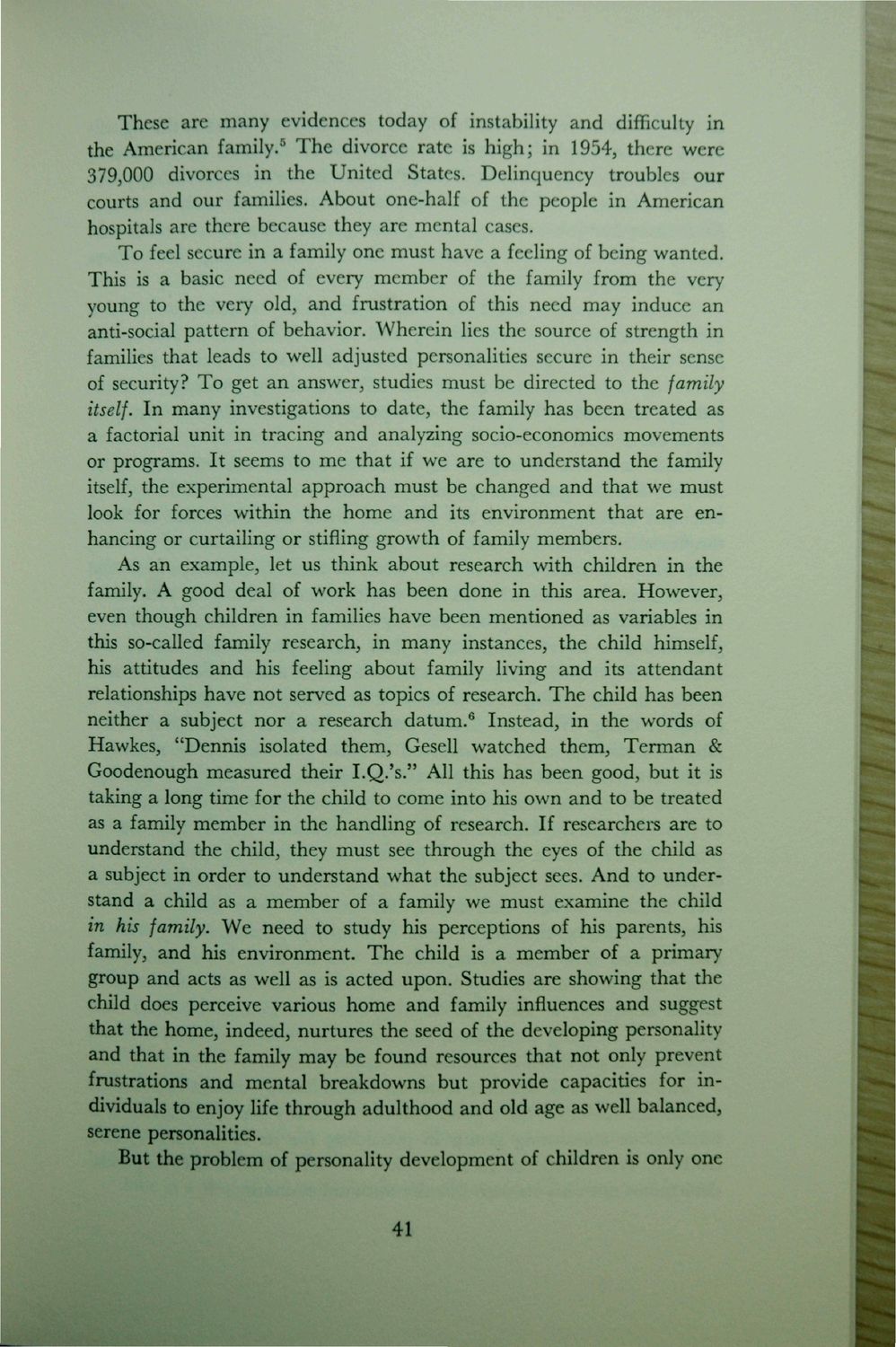| |
| |
Caption: Dedication - Home Economics - Challenge of Home Economics
This is a reduced-resolution page image for fast online browsing.

EXTRACTED TEXT FROM PAGE:
These are many evidences today of instability and difficulty in the American family.6 The divorce rate is high; in 1954, there were 379,000 divorces in the United States. Delinquency troubles our courts and our families. About one-half of the people in American hospitals are there because they are mental cases. To feel secure in a family one must have a feeling of being wanted. This is a basic need of every member of the family from the very young to the very old, and frustration of this need may induce an anti-social pattern of behavior. Wherein lies the source of strength in families that leads to well adjusted personalities secure in their sense of security? To get an answer, studies must be directed to the family itself. In many investigations to date, the family has been treated as a factorial unit in tracing and analyzing socio-economics movements or programs. It seems to me that if we are to understand the family itself, the experimental approach must be changed and that we must look for forces within the home and its environment that are enhancing or curtailing or stifling growth of family members. As an example, let us think about research with children in the family. A good deal of work has been done in this area. However, even though children in families have been mentioned as variables in this so-called family research, in many instances, the child himself, his attitudes and his feeling about family living and its attendant relationships have not served as topics of research. The child has been neither a subject nor a research datum.6 Instead, in the words of Hawkes, "Dennis isolated them, Gesell watched them, Terman & Goodenough measured their LQ.'s." All this has been good, but it is taking a long time for the child to come into his own and to be treated as a family member in the handling of research. If researchers are to understand the child, they must see through the eyes of the child as a subject in order to understand what the subject sees. And to understand a child as a member of a family we must examine the child in his family. We need to study his perceptions of his parents, his family, and his environment. The child is a member of a primary group and acts as well as is acted upon* Studies are showing that the child does perceive various home and family influences and suggest that the home, indeed, nurtures the seed of the developing personality and that in the family may be found resources that not only prevent frustrations and mental breakdowns but provide capacities for individuals to enjoy life through adulthood and old age as well balanced, serene personalities. But the problem of personality development of children is only one 41
| |